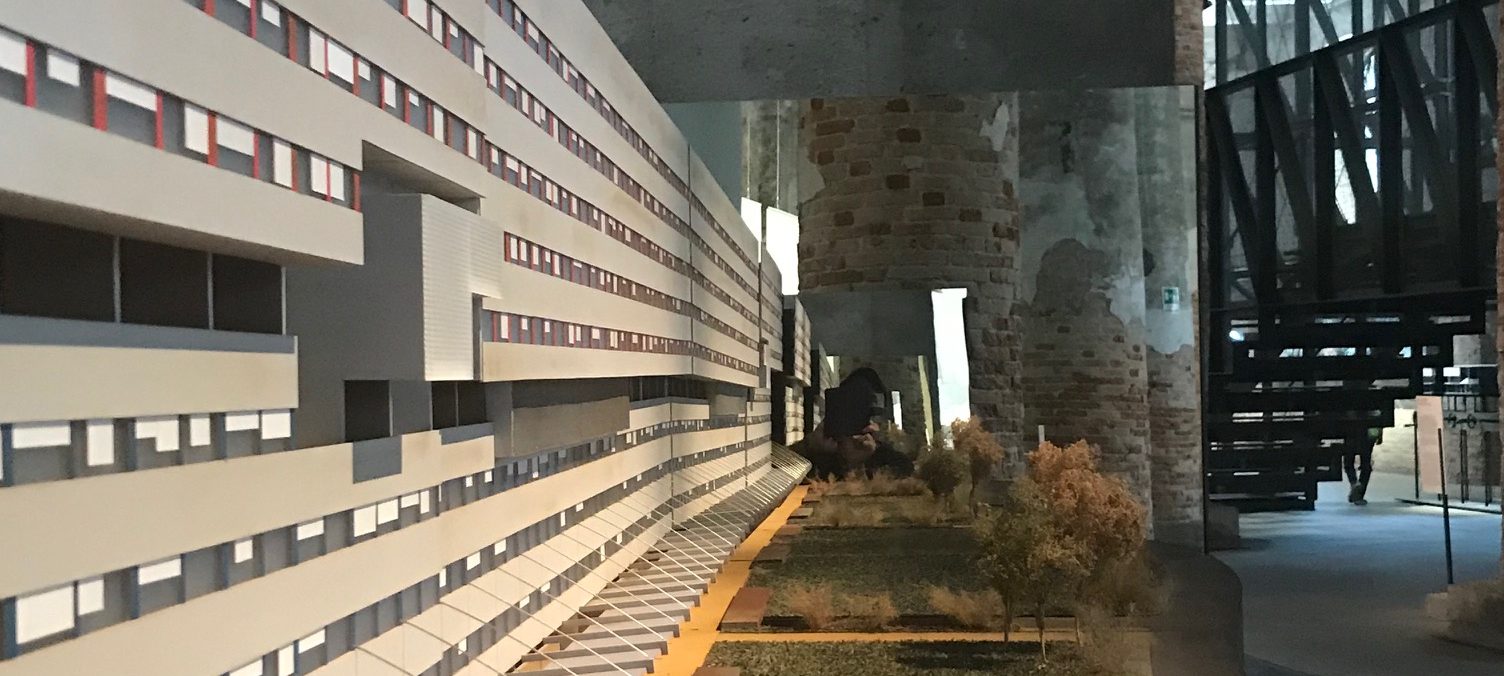The Surviving the Design Studio: 2018 Global Architectural Research Survey is in. Thank you so much to everyone, to those architects, who responded. I was working off a few different contact databases. Next time I do this research survey I will more effectively target respondents and make the definitions and the questions more precise. I have interspersed the survey with quotes from the respondents.
Architects are slowly starting to wake up to the fact that they need to do research to in order to stay ahead of their competitors whoever those competitors might be.
I work in a practice three days a week that is run by one principal and 3-4 staff. He is interested only in the projects he is working on and would consider research a waste if time and resources.
With the rise of the Design as Research movement in the early to mid 2000s architects began to question and argue about what constitutes research. For the most part this project, or push, was a response to the introduction of various research metrics and research evaluation exercises in universities in Australia, the UK and Europe. This push also coincided with the rise of parametric design and a renewed interest in technology in the discipline.
Many firms do not provide budget allocations for research or post occupancy studies and any research allocation can be difficult to get and has to be in relation to a particular project and only as a small time/money allocation. Therefore most research that I do is in my own time and often after hours.
But what might have been missed in all of this was the idea of industry development in relation to Research-In-Practice. Even in the universities we still don’t know what Design as Research is. Even that old Etonian and architect Jeremy Till and now head honcho at Central St Martins doesn’t seem to have quite got his head around it in this piece on architectural research. He seems to have boiled architectural research down to “three stages” and then provides us with the diagram devised by Alejandro Zaera-Polo & Guillermo Fernandez Abascal as an example of research “into architectural processes.”
The diagram looks like an updated version of a Charles Jencksy diagram that only reinforces architecture as a narrow canon of profiling and privilege. Yes, that’s a cheap shot at Jeremy and Alejandro and Guillermo and yes, I need to look at that diagram in detail. But it looks like hocus pocus to me.
So read on: The Surviving the Design Studio: 2018 Global Architectural Research Survey is in.
Response rate
The response rate from the database I was working off was around 13%. Respondents came from all over the world and 47% were either partners or directors. 63% were from Australia and so the survey gives a pretty good idea of what is happening in Australia. The next biggest block was 10% from the UK and 8% from the Americas and about 8% came from Asia. 27% of practices had more than 50 people and 21% had from 11 to 50 people, and the rest 52 % had less than 10 people.
Most practices do not have a formal R&D program established

Yet most Practices claim to have an informal R&D program in the office.
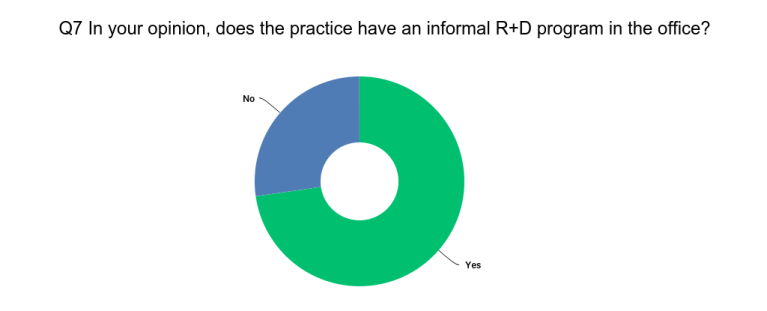
Everyone thinks Design as Research is a valid form of research.
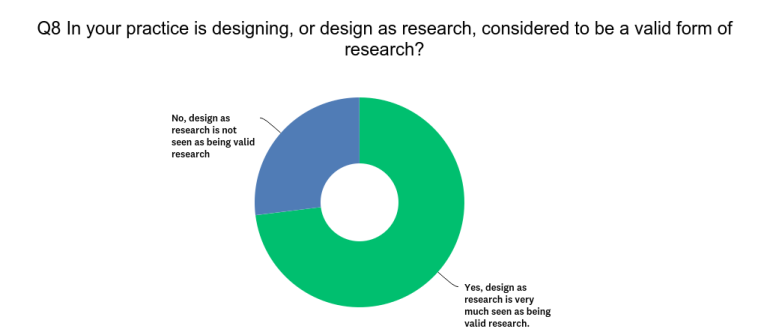
But not all practices think competitions or speculative design projects are part of a firms research activities.
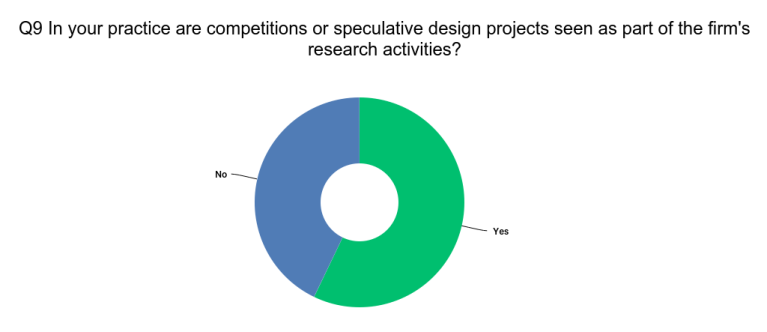
The majority of practices do not have a research function.
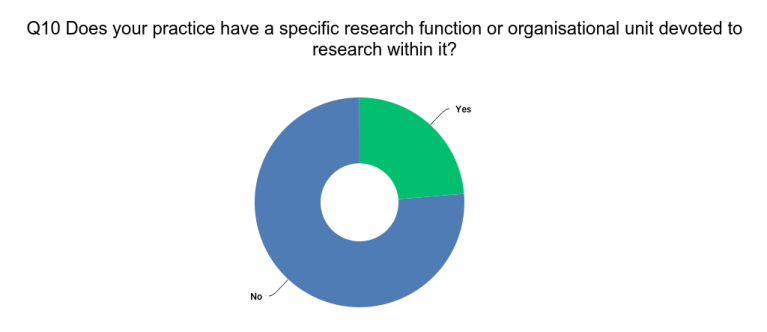
Design as Research ?
Architects in practice still think design is research but then, by and large, they have done little, for whatever reason to foster research or build a formal infrastructure around research. Most architects think they are researching when they design stuff. This may be why most architects think don’t have a formal research program, or research function in the office, and yet claim that they are still doing research.
In practice, the Design as Research proponents have failed to help practices, and the profession at large, to build the research infrastructure, methodologies and discourse required to help architectural firms.
In academia, the Design as Research proponents have failed to convince those who don’t think design as research of this merits. Yet some of these same proponents have simultaneously supported themselves in the university system via the mantra of Design as Research.
Walking the Talk
I am an adherent of the Design as Research project. But the primary aim of this project, to recognise design as a research activity, has been weakened by a lack of rigour to say the least.
Those who are sceptical about Design as Research cannot be blamed for that scepticism. If the knowledge produced through Design as Research cannot be verified, tested and positioned as new knowledge why wouldn’t you be sceptical?
Those architectural academics (many of whom, have aligned the project with the new delivery technologies) who have pursued the Design as Research have done little for its take up in Practice. Some academics just mouth of about it. It is little wonder that sceptics of the concept have not been swayed. Embedding a researcher into a practice and getting them to do things is not necessarily going to produce good research. Getting notable architects to reflect on their “body of work” is not necessarily going to produce new research knowledge that will help to develop architecture as a discipline.
Research-In-Practice
I see more hope for research in the practices themselves; I think even Jeremy the Etonian thinks this as well. Architects need to change their practice models if they are to survive. Its no good to just say we do design and that is research. That doesn’t just mean giving someone a job or a role as the research person in the office. It means changing the way design knowledge is created, conceptualised, captured and distributed in the office. That would require a Knowledge Management approach. But as well know many offices struggle with even the most basic and simplistic notions of management. Yes, different offices will require different models, and yes, smaller offices and sole practitioners obviously need a different research model as compared to a larger firms.
Finally, as one respondent noted:
There is a strong trend within the architectural community to claim what is in reality ‘work’ as ‘research’ for what are essentially marketing purposes. This is especially true with Design led Research which seems to rarely meet any sort of broadly accepted or quantifiable bar set by the broader research community.
Design led research is an excellent way for practices to contribute to the profession and broader community but a better definition and clearer bar needs to be established for it to gain traction or credibility within the research and broader communities. Sadly architecture doesn’t have a great track record in this area and the current systematic abuse of the term Design led Research does little to improve the standing of the profession.
If we can’t get more rigorous we will never take on the authority we need to build better cities.
